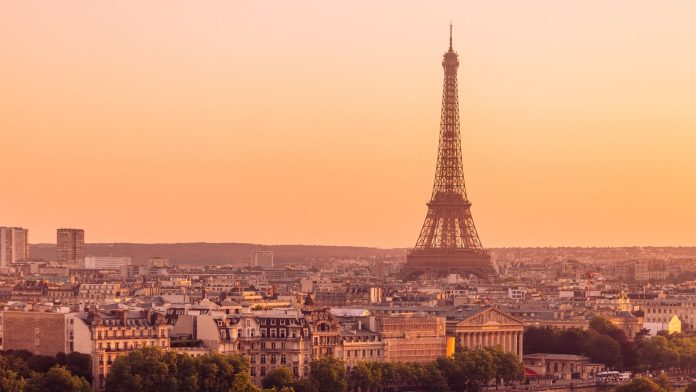
Paris Today: The Quiet Revolution of Cool Air
Imagine a Paris summer. The cobblestones shimmer beneath a relentless sun. The famed zinc rooftops of Haussmann-era buildings bake under the high heat, turning once-charming apartments into stifling ovens. For generations, the City of Light has thrived on its temperate charm, never quite embracing the hum of an air conditioner humming softly in the corner. But lately, that old Parisian indifference is melting away, just like the ice cubes in a cooling glass of Pastis on a sultry sidewalk café.
For decades, Parisian homes have notably resisted the allure of air conditioning—a creature familiar in New York lofts, Tokyo apartments, or the glass towers of Dubai, yet nearly absent here. To many locals, the thought of plugging in an A/C betrays more than just an aesthetic preference; it feels like surrendering a piece of their cultural identity rooted deeply in environmental consciousness and an old-world disdain for wastefulness.
But now, as heatwaves grow fiercer and summers stretch with an unforgiving grip, even the most steadfast Parisians are reconsidering. The logic of tradition is colliding with the stark reality of global warming, and a subtle rebellion against the heat is taking shape in the homes of the French capital.
The Heat That Changed Minds
In the heart of northeast Paris, Marion Lafuste, a 40-year-old mother of two, recalls last summer’s mercury climbing to an astonishing 41°C (105.8°F) in her top-floor apartment. “I didn’t think that was even possible,” she admits with a weary laugh, reflecting on the nights when she tried to combat the heat by placing ice packs before whirring fans, and sealing her shutters like armor against the blaze. Relief came only fleetingly.
For Marion and her family, the countryside cottage they retreat to on weekends becomes a sanctuary from the urban furnace, but during the week, the old methods just won’t cut it anymore. She found herself on the brink of surrendering her deeply held convictions. “Despite all my ideological worries about air conditioning,” she confesses, “I would buy a unit if we didn’t have the country home to escape to.”
Similarly, Ruben Arnold, 47, grapples with the climate cost of AC on a daily basis. As the head of a startup analyzing energy consumption in buildings, Ruben knows better than most the environmental burden of cooling technology. Yet, with young children sweltering in the heat, the decision to install air conditioning was clear and necessary. “Even when you know it’s a selfish pleasure,” he reflects, “there comes a tipping point at which all counter-arguments get thrown out. You need to get through the heat for your family.”
The Top-Floor Curse
Those who live beneath the copper and zinc roofs that crown Parisian buildings—often charming remnants of the 19th century—know the city’s summer heat more intimately than others. Martine Bontemps, 60, occupies a garret-like flat under a zinc roof in central Paris, where the summer warmth can feel suffocating. Yet, stubbornly, she resists the whisper of the air conditioner. Instead, a ceiling fan installed by her landlord is her meager defense. “I still won’t give in,” she says, a quiet refusal etched in her voice.
But the stakes are rising. Mets France, the national weather service, warns that by 2050, summer heatwaves in Paris could regularly tip toward 50°C (122°F), with tropical-like nights becoming a distressing norm. Why does this matter? Because the human body desperately needs cooler nights—below 20°C (68°F)—to rest, recover, and maintain health. The consequences of extreme heatwaves are already visible: in the deadly 2003 French heatwave, a third of heat-related elderly fatalities occurred within the very homes where they sought refuge.
This sobering reality led Sophie Julini, 53, to install air conditioning for her 86-year-old mother, providing her with precious hours of relief each day. Sophie’s decision marks a broader trend.
The Quiet Surge of Cooling in the City of Light
Air conditioning remains far from ubiquitous in Paris’s residential areas, but according to the APUR urban planning agency, its presence is “in full development.” Rental apartments hosting foreign visitors—especially those arriving from countries where air conditioning is a baseline expectation—are accelerating the shift. Yet, the city lacks comprehensive data. Many Parisians rely on discreet portable units, invisible in official building statistics.
“We’ve seen a strong trend toward air conditioning,” confirms Karine Bidart, director of the Paris Climate Agency (APC), a municipal body supporting the city’s climate transition. Her tone is cautious, though. “This is very problematic.”
The concern is not only the direct carbon footprint of these devices but the unintended urban consequences—what experts term the ‘urban heat island’ effect. Dan Lert, who coordinates the city’s climate plan, explains it bluntly: “Massive increases in private air conditioning could raise outdoor temperatures by 2°C, making the city even hotter. It’s a vicious cycle.”
One can almost hear the paradox echoing through the narrow Parisian alleys: the more Parisians seek refuge in mechanical cooling, the hotter their city becomes. The answer, some experts insist, lies not only in how we cool our homes but in changing the fabric and form of the buildings themselves.
A Tense Heritage Debate
The elegant zinc roofs, cherished for their historical and aesthetic value, are ironically part of the problem. These designs, emblematic of Paris’s architectural soul, intensify interior heat during summer. Renovating them with modern reflective materials or insulative technology could profoundly alleviate overheating. Yet heritage protection agencies often block such proposals, prioritizing preservation over public health.
Frederic Delhommeau, director of residential energy at APC, voices his frustration. “It’s one thing to use air conditioning as a last resort, especially for vulnerable populations. But making it a reflex—a first step—is problematic. There are fewer costly, more sustainable alternatives that are often ignored.”
Embracing Change Without Losing Soul
Is Paris on the cusp of losing its air conditioning aversion, or is there hope for a middle path? Anne Ruas, a researcher studying urban climate adaptation, offers a pragmatic view. “We need to stop guilt-tripping people who opt for air conditioning,” she says. “Instead, let’s innovate toward the least harmful, most efficient systems possible.”
Her call asks us to reflect on larger questions: Can tradition and innovation coexist in a time of climate crisis? How do we balance the urgent comforts of today with the sustainability imperative of tomorrow?
In a city famed for resisting the ordinary and embracing the exceptional, this tension plays out in the dance between heat and cool. Perhaps the Parisian summer, once a slow pas de deux of warm breeze and open windows, will now include the subtle hum of air conditioning, not as a betrayal but as an adaptation.
For readers worldwide, the Paris story is a mirror. As our planet warms, how will our own cities evolve? Will we cling to nostalgia at the cost of comfort and health, or find new ways to marry tradition with sustainability?
A Cooling Future: What Could It Look Like?
- Innovative Building Renovations: Retrofitting historic roofs with modern, eco-friendly materials that reflect heat without sacrificing aesthetic value.
- Smart Cooling Technologies: Air conditioning units optimized to minimize energy use, integrated with renewable power sources.
- Urban Greenery Expansion: Increasing tree cover and green roofs to naturally cool neighborhoods.
- Public Education Campaigns: Helping residents understand energy-efficient cooling practices and alternatives.
Ultimately, Paris’s gradual acceptance of air conditioning is more than a climate footnote; it is a story of resilience, of a city—and its people—confronting change with humility, pragmatism, and heart. And in their journey lies a powerful lesson for us all.









